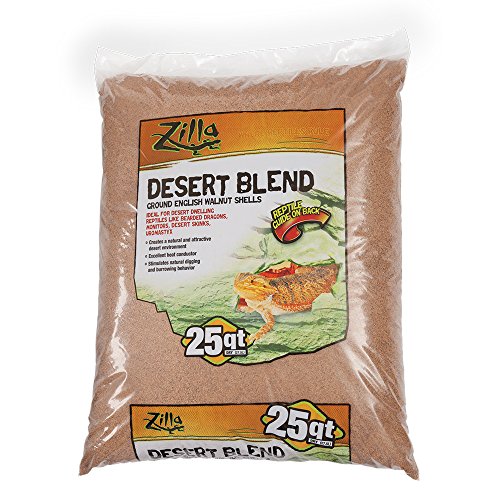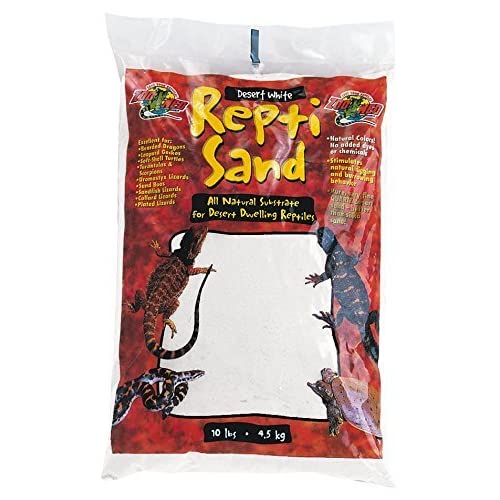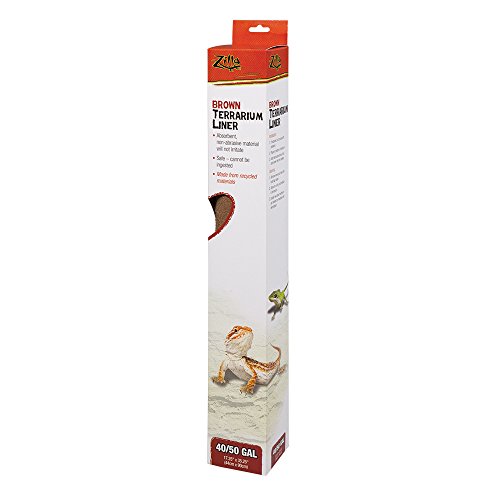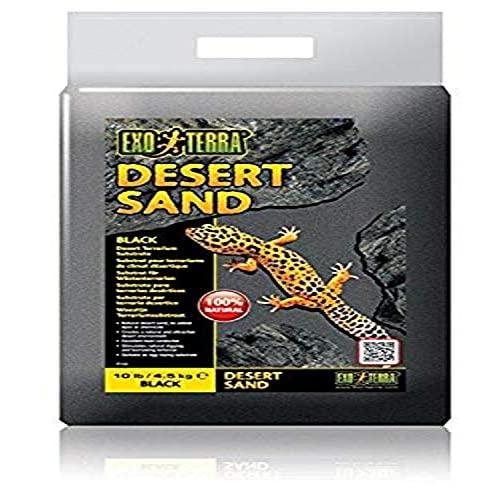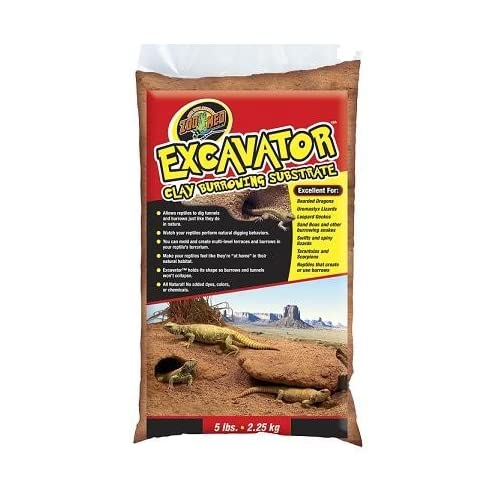Which substrate do you use and bearded dragon for? Currently, on the market there are many types of substrates, rich in both price and material. However, the popular choice of many people seems to be still reptile mats or dried moss.
Another less common substrate is bearded dragon sand, which in the past has hardly been the choice of many people, but recently it has become more popular.
The reason for this is because many people fear that the bearded dragon might eat sand and it will affect the health of the pet. However, sand has many advantages that you may not be aware of, and once you have mastered how to use bearded dragon sand, this will definitely be your choice.
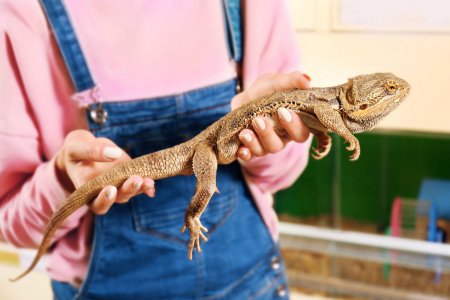
How to use bearded dragon sand?
As we mentioned above, the bearded dragon sand substrate makes many people concerned because their pet can eat sand, affecting its digestive system. However, this is still a quality substrate that you should consider.
The use of sand as a substrate for bearded gecko made many people hesitate, especially for baby bearded dragon. Babies may not be very aware and very naughty, so sand can hurt them.
However, you can control this situation by using baby bearded dragon sand mixed with clean soil or paper towels. This mixture has better hardness and texture than sand alone.
For adult bearded dragons, you can use play sand or digestive sand as a substrate. These sands are less dusty and less harmful to bearded dragons than other commercial sands. You can also mix sand with clean soil, newspaper, and natural moss as a substrate for pets.
And another note that is when using sand, to limit bearded dragon eat sand you should put their food on a plate or cup. These food bowls can prevent food from falling out and bearded dragons eat that sandy food. Instead of placing food directly on the substrate, you should invest in a food bowl, which will not take much of your time but can help bearded dragon’s digestive system.
Top 5 bearded dragon substrate reviews
#1 Zilla Ground English Walnut Shells Desert Blend
This is a substrate made from walnut bark, finely ground. This product is 100% natural so you can use it as fertilizer instead of throwing them away like many other commercial substrates.
The product simulates desert sand, providing bearded dragon space to stimulate its natural dug-up behavior. You should pour about 2 inches thick substrate to the bearded dragon to have enough space to dig.
Besides this substrate can also conduct heat very well, easy to clean and replace. To ensure hygiene, you should replace the substrate at least 1 time per month, and clean it regularly to remove bearded dragon’s waste.
#2 Zoo Med ReptiSand
This is one of the best bearded dragon sand that you should consider in your priority list. This product not only received much appreciation but also gradually became the best substrate for the bearded dragon.
The substrate is 100% white desert sand, without using any dyes or chemicals to change its properties. Besides, this desert sand doesn’t create dust or impurities so you can safely use it as a substrate for bearded dragon.
It can also stimulate a pet’s dug-up behavior, filling up about 2 inches of sand to ensure the bearded dragon has enough space. Hygiene for this product is not a problem, and it can be reused when dried.
And you should also remember that never put food directly on this desert sand, but put in the food bowl.
#3 Zilla Reptile Terrarium Bedding Substrate Liner
An economical option is definitely indispensable on this list, which is Bedding Substrate Liner from Zilla. With just one investment, you can own a reusable and easily replaceable substrate.
This substrate is a mat that comes with a roll and you can cut it to any size you want, and you will definitely have a lot of use of this substrate in one investment.
This product is also woven very firmly so you do not need to worry that the bearded dragon’s nails are entangled leading to broken nails. This substrate also absorbs moisture well and does not cause unpleasant odors. This is thanks to the enzymes in the composition, which eliminates the odor immediately without leaving any signs.
Regular cleaning is also a lot easier. You only need to remove the substrate and clean it, reuse or replace it. All are not a difficult challenge.
#4 Exo Terra Desert Sand
Exo Terra Desert Sand is a special product with impressive black color, providing a more novel living space for bearded dragons. And perhaps you do not need to hesitate with the quality products of Exo Terra.
This substrate provides a bearded dragon a comfortable and satisfying space for digging. Different from the usual colors, black stimulates the curiosity as well as the natural instinct of a pet.
Besides, this desert sand can also conduct heat and has gone through a sieving process carefully, so you will not be able to find any impurities in it.
#5 Zoo Med Excavator Clay Burrowing Substrate
Zoo Med Excavator Clay Burrowing Substrate is a good quality product, offering bearded dragon a completely new experience compared to other substrates.
To use this product, you must mix it with water before pouring it into the enclosure. After a while, the clay will strangely dry and fix its shape. Therefore, you should take advantage of the time when the clay is not dry to create a cave or tunnel for the bearded dragon.
This product does not use dyes or any chemicals to color, so you can be assured when your pet comes into contact with the substrate. When the clay is dry, you are also easier to clean and certainly bearded dragon cannot eat this substrate.
However, this is a substrate that does not absorb easily and smells quickly. So you need to clean it regularly to remove odors and waste.
Why bearded dragons suffered sand impaction?
Have you ever wondered why bearded dragon sand impaction happened? This is a phenomenon that can occur with any bearded dragon living in captivity.
In fact, the bearded dragon does not live in the desert, but rather in the dry forests of Australia. This place has very little sand, if not for no. And more specifically, the soil in these areas is rich in calcium.
Bearded dragon when living in the natural environment will dig the soil, even eat the soil to provide calcium for themselves. Some will find food in the ground, which will surely have a nutritious soil to eat. So if you see the pet salesman saying that the bearded dragon lives in the desert, don’t rush to believe it.
Because of this habit, the bearded dragon always maintained digging the substrate and eating it. It seems that this was a bearded dragon’s habit of being born and it is not uncommon for it to seek calcium by eating sand.
Based on this habit, you can provide calcium to the bearded dragon. If the amount of nutrition for a bearded dragon is guaranteed, this phenomenon is nothing to worry about.
To solve this problem, provide enough calcium for bearded dragons through food. If provided with sufficient calcium, it will no longer need to eat substrate to supplement calcium.
All you need to do is use calcium powder or some high calcium foods to feed bearded dragons. Make sure that ample calcium is always filled in the food bowl.
What to do when bearded dragon has a problem with sand?
If bearded dragon ate sand or got bearded dragon sand in the eye, what should you do? This seems to be a common question for many people because it happens so often and it seems that people are not calm enough to find an answer.
Bearded dragons love to dig, they may not dig to eat substrate, they simply prefer to bury themselves in the sand. Therefore, bearded dragon sand in the nose and eyes may be affected.
In this case, maybe the bearded dragon will feel uncomfortable and move panic around the cage. Don’t worry, slowly wash away the eye sand with water, use a small cotton swab to remove the sand from its nose. Do it as gently as possible.
If a bearded dragon eats a bit of sand, don’t panic. It may be a little annoying for crested geckos, but we can remove the sand through the digestive tract.
Give the bearded dragon a little more water, a little more food to let the sand escape through pet waste. Always remember to provide water and bearded dragon food for food bowls and cups to avoid getting sand.
You should also regularly clean bearded dragon sand, a clean substrate that will ensure the safety of your pet’s health. So how to clean bearded dragon sand?
Very simple, you just need the cleaning tools substrate for pets, very easy to find online or pet stores. Or you can also have a small hole scoop or a small net that can filter waste out of the sand.
You can clean the waste once a day or every 2 days. And completely replace the old substrate with the old substrate every week or every two weeks. It is essential to ensure that the bearded dragon’s living environment is always clean.
Some other bearded dragon substrates
#1 Reptile mat
Besides the sand, you can choose a bearded dragon sand mat or a grass mat. This is a fairly economical option and can be reused for a long time.
In general, this type of substrate is a cushion covering the bottom of the enclosure, providing the bearded dragon a more comfortable and clean living space.
The mat comes in a variety of materials, from soft to rough, but we strongly recommend choosing products that are tightly woven to prevent the bearded dragon’s nails from being entangled. This can cause a bearded dragon situation to have a broken nail.
Usually, this substrate always follows the whole roll, so that you can cut it to the desired size or can be easily replaced. Currently, the most mat is recyclable so this is a pretty economical option.
Cleaning this substrate is also easier than other substrates. For the grass mat, you just need to use a brush and a little cleaning detergent to be. However, how to clean bearded dragon sand mat is not so easy.
For the sand mat, rubbing it vigorously with the brush will cause the sand to fall out, so you should not use this method to clean it. First, prepare a mixture of warm water and soap, then soak the mat for a few minutes. Finally, rinse with clean water.
#2 Newspapers and paper towels
This is a really economical choice and for those on extremely tight budgets. Ty is not the best choice but this substrate is also used by a lot of people.
Newspaper and paper towels can absorb very quickly but this is also its minus point. If you do not replace them temporarily, bacteria can grow very quickly in such a humid environment.
This substrate does not hurt bearded dragons, but you must ensure that you keep your pet’s environment clean by regular replacement.
#3 Clay
Clay is becoming a popular choice besides bearded dragon sand or mat. If bearded dragon has the advantage of providing a comfortable digging space for pets, bearded dragon mat offers economical options, clay has the advantage of providing pets with creative space.
You can create your own roads and caves by squeezing clay. After the clay has dried, it will remain that way. Bearded dragons can also create their own living environment when the clay is not dry.
With this material, you also do not need to worry that bearded dragons can eat it. And it can also exist for a long time. However, you should note that the cleaning of the substrate is quite difficult. Once it is dry, it is very difficult to absorb and cannot be easily replaced.
#4 Ceramic tiles
Instead of investing in commercial substrates, many people choose ceramic tiles as a bearded dragon substrate. This is an extremely durable material that can last for a very long time.
Besides, the aesthetics of ceramic tiles bring to bear captivity of bearded dragon are remarkable. It will be a striking feature for the living space of bearded dragon.
However, you may have trouble cleaning this substrate periodically. It is easy to clean, but removing it from a pet’s captive environment is quite a challenge.
This is a good quality substrate but only if it is guaranteed to be cleaned regularly.
